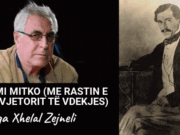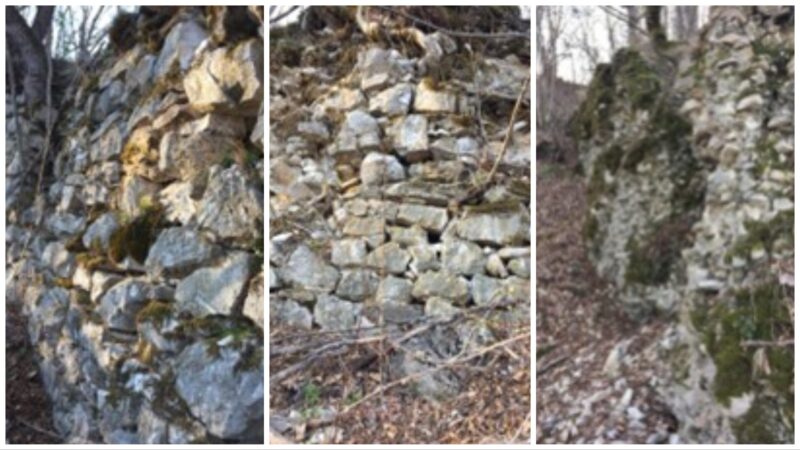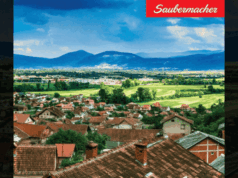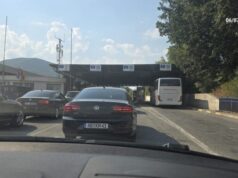Në Ferizaj ju pret trashëgimia e pasur kulturore dhe mundësitë magjepsëse turistike. Udhëtoni nëpër kohë ndërsa eksploroni monumente të jashtëzakonshme, secila e mbushur me tregime të së kaluarës. Le të zbulojmë vendet e mrekullueshme që do t’ju njohin më një epokë të shkuar.
The unfolding of the cultural heritage and tourism of Ferizaj
In Ferizaj, rich cultural heritage and fascinating tourist opportunities await you. Travel through time as you explore incredible monuments, each filled with stories from the past. Let’s discover the wonderful places that will remind you of a bygone era.
Kalaja e Jezercit
Në të kaluarën, ky lokalitet arkeologjik i shquar ishte njohur si Kalaja e “Pjetrit”, kurse nga banorèt e fshatit dhe nga të dhënat tjera del se ky toponim njihej si “Kalaja e Madhe”.
Vendndodhja e tij është në anën e djathtë të lumit Nerodime, në afërsi ku ky lumë bashkohet. Ndër të tjera, kalaja është e afërt me një kishë paleokristiane të shekujve IV-V, shtuar në bukurinë e vendit.
Kalaja e Jezercit është thellësisht e rëndësishme si një monument kulturor dhe historik në Ferizaj. Nëse dëshiron të zhvendosesh në kohën e lashtë, vizita në këtë kala është e pashmangshme.
Jepni jetë kujtimeve të mëparshme duke kaluar rrugët e vjetra të kalasë, duke zbuloar sekretet e sakta të mureve të gurit dhe duke ndier frymën e lashtësisë.
Një udhëtim që do të ruhet gjithmonë në kujtesën tënde!
Jezerci Castle
In the past, this remarkable archaeological site was known as the “Peter’s Castle”, while from the residents of the village and from other data it appears that this toponym was known as the “Great Castle”.
Its location is on the right side of the Nerodime River, near where this river joins. Among other things, the castle is close to a Paleo-Christian church of the IV-V centuries, adding to the beauty of the place.
Jezerci Castle is deeply important as a cultural and historical monument in Ferizaj. If you want to move back in time, a visit to this castle is inevitable.
Bring to life the former memories by passing the old streets of the castle, discovering the exact secrets of the stone walls and feeling the spirit of antiquity.
A trip that will always be stored in your memory!
Kisha paleokristiane në Nikadin
Në vitet 1960, gjurmët e asaj që mund të ishte një kompleks vilash romake u zbuluan në fshatin Nikadin, duke zbuluar një artefakt jashtëzakonisht të rrallë dhe ndoshta unik për rajonin e Kosovës. Kemi të bëjmë me një kapak sarkofagu, i punuar tërësisht nga gur gëlqeror i mermeruar bukur, që merr formën e një çatie me majë, të stolisur me motive të mrekullueshme antropomorfe (figura njerëzore) dhe floreale. Ky kapak sarkofagu daton në periudhën e vonë romake të shekullit III dhe fillim të shekullit të IV e.s.
Vendi ku u gjet kapaku i sarkofagut iu nënshtrua gjithashtu disa gërmimeve arkeologjike (2007), duke zbuluar mbetjet e një kishe të hershme të krishterë me përmasa mesatare, ndonëse të dëmtuara ndjeshëm. Kisha, që daton nga shekujt IV deri në VII pas Krishtit, shfaqi disa elementë dekorativë të ripërdorur, duke përfshirë vepra arti dekorative plastike nga periudha romake (shek. III-IV pas Krishtit) të përdorura për qëllime varresh.
Dëshmoni shkrirjen e epokave të ndryshme, ku mbetjet e së kaluarës romake përzihen pa probleme me trashëgiminë e hershme të krishterë.
Zbuloni joshjen enigmatike të këtij vendi arkeologjik me detajet e kapakut të sarkofagut, një dëshmi e mjeshtërisë së qytetërimeve të lashta.

Paleochristian church in Nikadin
In the 1960s, traces of what may have been a Roman villa complex were discovered in the village of Nikadin, revealing an extremely rare and possibly unique artifact for the Kosovo region. We are dealing with a sarcophagus lid, made entirely of beautifully marbled limestone, which takes the form of a peaked roof, adorned with wonderful anthropomorphic (human figures) and floral motifs. This sarcophagus lid dates to the late Roman period of the 3rd century and the beginning of the 4th century AD.
The site where the sarcophagus lid was found also underwent some archaeological excavations (2007), revealing the remains of a medium-sized, albeit significantly damaged, early Christian church. The church, dating from the 4th to 7th centuries AD, displayed several reused decorative elements, including decorative plastic artworks from the Roman period (3rd-4th centuries AD) used for tomb purposes.
Witness the fusion of different eras, where remnants of the Roman past blend seamlessly with the early Christian heritage.
Discover the enigmatic allure of this archaeological site with the details of the sarcophagus lid, a testament to the craftsmanship of ancient civilizations.
Mozaiku në Nerodime të Poshtme
Në vitin 1988, në fshatin Nerodimë e Poshtme, që gjendet në perëndim të qytetit të Ferizajt, u zhvilluan disa sondazhe arkeologjike në afërsi të varreve ortodokse, duke çuar në zbulimin e një kompleksi të një vile të antikës së vonë. Kjo vilë ishte e pajisur me atrium dhe një mozaik polikrom, me motive gjeometrike dhe figura dyshemesë. Faza e parë e ndërtimit daton në shekullin IV, ndërsa rindërtimi dhe ndërtimi i ri i përket shekullit V-VI.
Mozaiku u zbulua në dyshemenë e një dhomë drejtkëndore me një absidë, e cila mund të ketë shërbyer si triklinijum. Fatkeqësisht, ky mozaik u vjedh nga pushtuesit serbë dhe tani gjendet në territorin e Serbisë.
Edhe pse mozaiku fizikisht nuk gjendet më në vendin origjinal, ky zbulim mbetet një dëshmi e jashtëzakonshme e trashëgimisë sonë antike. Ai na tregon për pasurinë e artit dhe kulturës së periudhës së vonë antike, duke sjellë në pah teknikat e sofistikuara të realizimit të mozaikut dhe pasionin për bukurinë estetike të atëhershme.
Mosaic in Nerodime e Poshtme
In 1988, in the village of Nerodime e Poshtme, located west of the city of Ferizaj, several archaeological surveys were conducted in the vicinity of the Orthodox graves, leading to the discovery of a late antique villa complex. This villa was equipped with an atrium and a polychrome mosaic, with geometric motifs and floor figures. The first phase of construction dates back to the 4th century, while the reconstruction and new construction belongs to the 5th-6th century.
The mosaic was discovered on the floor of a rectangular room with an apse, which may have served as a triclinium. Unfortunately, this mosaic was stolen by the Serbian invaders and is now in the territory of Serbia.
Although the mosaic is no longer physically found in its original location, this discovery remains a remarkable testament to our ancient heritage. It tells us about the wealth of art and culture of the late antique period, highlighting the sophisticated techniques of mosaic creation and the passion for the aesthetic beauty of that time.
Mali i Kishës në Komogllavë
“Mali i Kishës” në Komogllavë është një kishë ilire-dardane e ndërtuar në një lartësi mbi nivelin e detit prej 600 metrash. Kjo kishë mendohet të jetë qendër ku u kryen shërbimet fetare për disa fshatra të rrethinës. Hapësira e gjerë përreth kësaj kisheje dhe fragmentet që janë gjetur konfirmojnë ekzistencën e jetës në këtë vend. Në këtë lokalitet janë zbuluar vaza dhe enë të qeramikës, monedha, rroba, gjënde të karbonizuara të hekurit, si dhe gurë të veçantë.
Kjo kishë besohet të ketë ndërtuar në shekullin IV-V pas Krishtit, por u rindërtua në periudhën mesjetare gjatë sundimit të Perandorisë Bizantine. Ajo përfaqëson një lokalitet antik të urbanizuar me rrugë, kanalizim dhe infrastrukturë të tjera. Poçaria e gjetur këtu ngjan pak me ato të gjetura në vendbanime të tjera. Këto enë të qeramikës dhe kryqi i kishës tani gjenden në muzeun e qytetit në Ferizaj.
Church Hill in Komogllavë
“Church Mountain” in Komogllavë is an Illyrian-Dardane church built at an altitude of 600 meters above sea level. This church is thought to be the center where religious services were performed for several villages in the vicinity. The vast space around this church and the fragments that have been found confirm the existence of life in this place. Pottery vases and containers, coins, clothes, carbonized iron vessels, as well as special stones have been discovered in this locality.
This church is believed to have been built in the 4th-5th century AD, but was rebuilt in the medieval period during the rule of the Byzantine Empire. It represents an ancient urbanized locality with roads, drainage and other infrastructure. The pottery found here bears little resemblance to those found in other settlements. These pottery vessels and the church cross are now in the city museum in Ferizaj.
Kroi i Periudhës Iliro-Romake
Kroi i periudhës lliro-romake gjetet në fshatin Komogllavë dhe është vendosur në periudhën para romake, duke qenë se romaket përdornin për sistemet e ujësjellësit kryesisht tuba të bëra nga plumbi. Realiteti është se gurët e vendbanimit antik gjenden në të gjitha anët e fshatit, pasi aty mund të gjenden shtresa hiri, blozë si dhe pjesë të enëve të qeramikës. Bazuar në formën dhe përmbajtjen e tyre, këto gjurmë mendohet të takojnë poçarisën vendase (dardane) të periudhës së vonë antike. Pjesë të tubave të kroit aktualisht gjenden në muzeun e qytetit.
Kjo strukturë tregon se komunitetet e lashta kishin njohuri të thella të teknologjisë së ujësjellësit dhe përdorimin e tubave prej plumbit. Gjurmët e lashta të vendbanimit antik në të gjitha pjesët e fshatit na japin një vështrim të hollësishëm në jetën dhe kulturën e periudhës antike.
Water source of the Illyrian-Roman Period
The Illyrian-Roman period water source is found in the village of Komogllavë and was placed in the pre-Roman period, since the Romans used mainly lead pipes for water supply systems. The reality is that the stones of the ancient settlement are found in all parts of the village, as layers of ash, soot and parts of pottery can be found there. Based on their form and content, these traces are thought to date to the local (Dardan) pottery of the late antique period. Parts of the pipes are currently in the city museum.
This structure shows that ancient communities had deep knowledge of waterworks technology and the use of lead pipes. Ancient traces of the ancient settlement in all parts of the village give us a detailed look at the life and culture of the ancient period.
Për më shumë informacione, vizitoni: www.visit-ferizaj.com
For more information, visit: www.visit-ferizaj.com
@tetovanews
@tn.lajmelokale

























